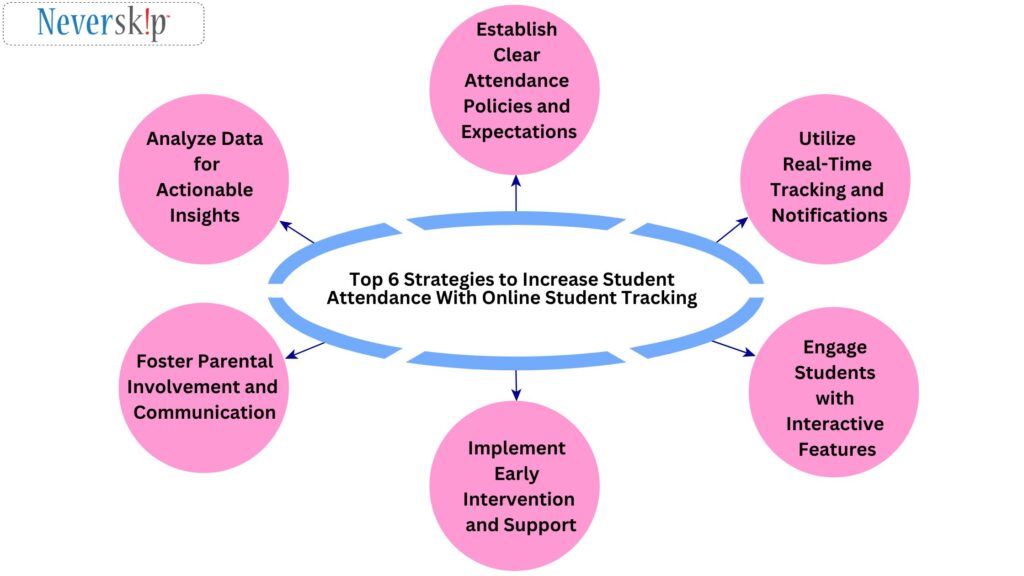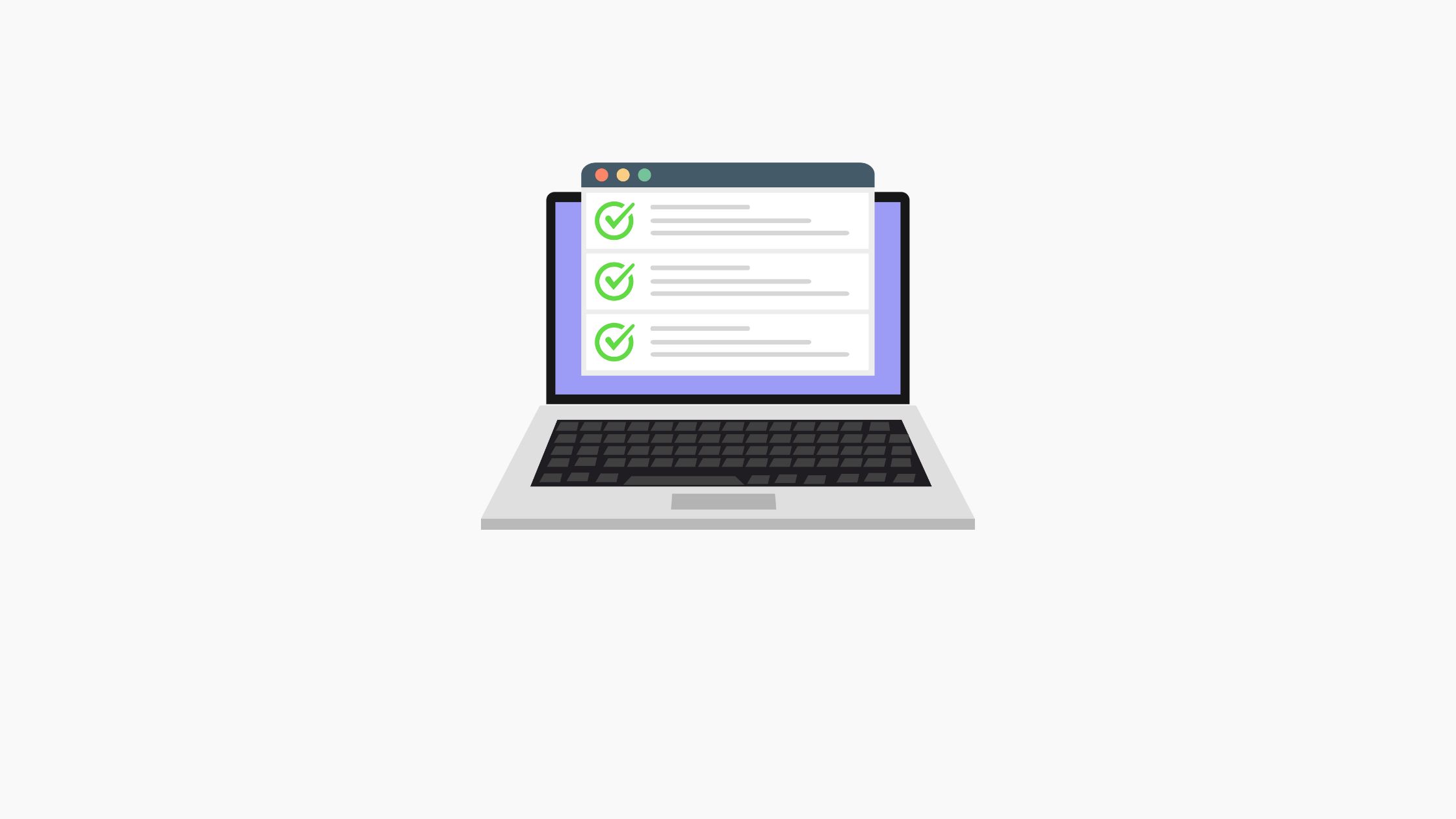Are you tired of playing a guessing game when it comes to student attendance?
Are empty virtual seats becoming an all-too-familiar sight during your online classes?
Well, it’s time to put an end to the vanishing act and unlock the secret to skyrocketing attendance rates! No doubt that in recent years, engaging and retaining students has become a paramount challenge for educational institutions. But, the good news is that you can overcome the challenges and improve your student attendance with the help of online student tracking.
Wondering how or what it is? Well, read on, as we are going to walk you through all you need to know!
What Is Online Student Tracking?
Online student tracking refers to the process of monitoring and recording students’ activities, progress, and engagement in virtual learning environments. This tracking is facilitated through the use of digital tools and platforms that gather data on students’ online interactions, participation, and performance.
With the increasing prevalence of online education, tracking student behavior and academic involvement has become essential for educators and institutions. Through the implementation of online student tracking systems, educational institutions can collect valuable data points, such as login times, assignment submissions, quiz scores, forum discussions, and other relevant activities.
Top 6 Strategies to Increase Student Attendance With Online Student Tracking

Advantages of Student Attendance Management System
Now let’s explore exactly how you can improve student attendance with online student tracking!
1. Establish Clear Attendance Policies and Expectations
The foundation of any successful attendance improvement initiative begins with establishing clear and well-defined attendance policies and expectations. As educational institutions shift to online learning environments, it is vital to communicate attendance guidelines effectively to both students and faculty members.
Transparent and easily accessible policies can be disseminated through the institution’s learning management system (LMS) or official communication channels. Clear attendance policies should include details on what constitutes excused and unexcused absences, procedures for reporting absences, and the potential consequences for excessive absenteeism.
Additionally, it is essential to highlight the benefits of regular attendance and active participation in online classes. When students understand the importance of their presence in the virtual classroom, they are more likely to prioritize attendance and engagement.
An open and honest discussion about attendance policies can also involve students in the decision-making process, making them feel part of the learning community. This collaborative approach fosters a sense of responsibility and accountability, encouraging students to commit to their academic journey.
2. Utilize Real-Time Tracking and Notifications
Online student tracking systems offer a game-changing feature: real-time tracking and notifications. Leveraging this capability allows educational institutions to monitor student attendance as it happens and respond promptly to attendance-related issues.
Real-time tracking empowers educators to identify students who are absent from online classes immediately. With this information at hand, teachers and administrators can reach out to absent students promptly, offering support and guidance.
By addressing potential challenges early on, educators can mitigate further disengagement and encourage students to stay connected to their virtual learning environment.
Automated notifications are an invaluable tool for enhancing student attendance. These notifications can be sent to students’ email addresses or mobile devices, serving as gentle reminders for upcoming classes, assignment due dates, and other important events.
By utilizing automated reminders, students are more likely to be aware of their responsibilities and commitments, ensuring they remain active participants in their online courses.
Moreover, real-time tracking and notifications can assist educators in recognizing patterns of attendance and disengagement. Identifying recurring issues allows for targeted interventions, enabling teachers to address specific challenges that may be affecting attendance.
3. Engage Students with Interactive Features
In the virtual world of online education, engaging students and maintaining their attention are paramount to ensuring a successful learning experience. Online student tracking systems offer valuable insights into student engagement and participation, enabling educators to harness interactive features that captivate students’ interest and foster a deeper understanding of the subject matter.
- Multimedia Content: Integrating multimedia elements, such as videos, animations, and audio clips, can enhance the learning experience and make it more engaging for students. Visual and auditory stimuli can appeal to different learning styles and capture students’ attention, making complex concepts more accessible and memorable.
- Gamification: Gamification involves incorporating game-like elements into the learning process to create a sense of challenge and achievement. Features like quizzes, badges, leaderboards, and rewards can motivate students to actively participate in their coursework and strive for excellence.
- Interactive Assessments: Interactive assessments, such as quizzes with immediate feedback, allow students to gauge their understanding of the material in real time. These assessments can be adaptive, adjusting the difficulty level based on the student’s performance, and providing a personalized learning experience.
- Virtual Discussions and Group Activities: Online student tracking data can reveal patterns of student participation in virtual discussions and group activities. Educators can leverage this information to encourage students who are less engaged to actively participate in discussions or collaborate with peers in group projects. These interactions foster a sense of community and shared learning experiences.
- Virtual Labs and Simulations: In fields where hands-on experience is essential, virtual labs and simulations offer practical learning opportunities in a digital environment. Online student tracking can reveal which students are actively utilizing these resources, allowing educators to provide additional support and encouragement to those who may benefit from hands-on practice.
By engaging students with interactive features, educators can create a dynamic and immersive learning environment that promotes curiosity, critical thinking, and active participation.
As students become more invested in their education, their motivation to attend classes regularly and participate actively increases, ultimately leading to improved academic outcomes.
4. Implement Early Intervention and Support
Proactive intervention is crucial for addressing attendance issues and supporting students facing challenges in the virtual learning environment. Online student tracking systems can play a vital role in identifying early warning signs, enabling educators to provide timely assistance and support to students in need.
- Absenteeism Patterns: Online student tracking allows educators to identify patterns of absenteeism among students. Recognizing recurring absences early on can signal potential disengagement or academic struggles. Teachers can then reach out to the students individually to understand the reasons behind their absences and provide appropriate support.
- Personalized Outreach: Early intervention involves personalized outreach to students who may be facing challenges. By utilizing online student tracking data, educators can tailor their communication to address individual concerns, whether it’s academic, personal, or technical issues hindering their attendance and engagement.
- Virtual Office Hours and One-on-One Support: Offering virtual office hours and one-on-one support sessions can be immensely beneficial for students seeking additional guidance. By analyzing online student tracking data, educators can identify students who may require extra help and proactively invite them to virtual support sessions.
- Academic Support Resources: Online student tracking systems can indicate students who may be struggling academically. Educators can recommend relevant academic support resources, such as tutoring services or supplemental materials, to help students overcome challenges and improve their performance.
- Social-Emotional Support: Online student tracking data can identify students who may benefit from social-emotional support. Schools can implement virtual counseling services or peer support programs to address students’ emotional well-being.
By implementing early intervention and support strategies, educational institutions can create a safety net for students, ensuring that no student falls through the cracks.
Identifying attendance issues and offering timely assistance not only increases student attendance and engagement but also promotes a supportive and caring learning environment that fosters holistic student development.
5. Foster Parental Involvement and Communication
Fostering parental involvement and maintaining effective communication between parents, educators, and students are vital components of a successful learning ecosystem. Parental engagement not only enhances student attendance but also plays a significant role in overall academic achievement and well-being.
Online student tracking systems can be powerful tools in facilitating this vital connection and building a collaborative educational community.
- Regular Updates on Student Progress: Online student tracking systems allow parents to stay informed about their child’s academic progress in real-time. Teachers can provide regular updates on attendance, assignment submissions, quiz scores, and overall performance, enabling parents to actively support their child’s learning journey.
- Virtual Parent-Teacher Conferences: Virtual parent-teacher conferences offer a convenient way for parents and educators to discuss student progress, attendance, and any concerns or challenges the student may be facing. Online student tracking data can serve as a basis for these conversations, allowing for focused discussions on specific areas that may require attention.
- Parental Access to Learning Materials: With online student tracking, parents can gain access to learning materials and resources used in the virtual classroom. This visibility empowers parents to better understand the curriculum and support their child’s learning outside of school hours.
- Collaboration on Student Support Plans: For students who may be facing attendance or academic challenges, collaboration between parents and educators is crucial. Online student tracking data can be used to identify areas that require additional support, enabling parents and educators to work together in creating personalized support plans for the student’s success.
The collaboration between parents and educators enhances student accountability, motivation, and attendance, contributing to a more fulfilling and successful educational journey.
6. Analyze Data for Actionable Insights
In the digital age, data analysis plays a pivotal role in driving informed decision-making and optimizing educational outcomes. Online student tracking systems provide an abundance of data on student attendance, engagement, and performance.
Analyzing this data can yield actionable insights that empower educators to implement targeted interventions and continuously improve the learning experience.
- Identify Attendance Patterns and Trends: Online student tracking data allows educators to identify attendance patterns and trends among students. Recognizing patterns of absenteeism or disengagement early on enables timely intervention to support students and address any underlying issues.
- Monitor the Effectiveness of Strategies: Online student tracking enables educators to assess the impact of various strategies implemented to increase student attendance and engagement. By tracking the outcomes of these initiatives, educators can refine their approaches and focus on what works best for their specific student population.
- Predictive Analytics for Early Warning Systems: Leveraging data analytics, online student tracking systems can provide predictive insights into potential student risks. Early warning systems can alert educators to students who may be at risk of falling behind or disengaging, enabling proactive support to prevent academic challenges.
- Continuous Improvement and Professional Development: Data analysis is not limited to student performance alone. It can also be used to evaluate and enhance the effectiveness of teaching practices. Online student tracking data can inform educators about the impact of their instructional methods, prompting professional development opportunities for continuous improvement.
Optimize Your Student Attendance With Neverskip Student Attendance Management System
Evidently, improving student attendance is crucial for enhancing the overall learning experience and academic success. With Neverskip Student Attendance Management System, optimizing attendance has never been easier.
Neverskip offers a range of top features designed to simplify attendance tracking and improve communication between educators, students, and parents. With a unified dashboard, teachers can effortlessly view attendance insights, streamlining manual attendance calculation and saving valuable time.
- The RFID Student Attendance System takes attendance tracking to the next level by offering a contactless solution. Through RFID card-based tracking, teachers can focus on delivering lessons while the system seamlessly records student attendance.
- Keeping parents informed is vital for a collaborative learning environment. Neverskip ensures parents are in the loop with check-in, check-out times, late entries, and absent records. Daily attendance updates are automatically sent to parents through email, SMS, or Whatsapp, fostering strong parent-teacher communication.
- The integration of Neverskip’s result management system with the attendance management system allows for comprehensive student evaluation. By collating academic and attendance data, educators gain valuable insights into student performance, late entries, and absent reports, enabling targeted support and intervention.
With Neverskip Student Attendance Management System, educational institutions can optimize student attendance, promote active engagement, and implement a conducive learning environment that leads to improved academic outcomes.
Book a free demo today to try it firsthand!








